While organic efforts take the large part of the inbound marketing cake, display ads are the paid elements of a five-star marketing strategy.
It’s a classic opposites-attract scenario, whereby the paid and organic efforts lift each other to be the best versions of themselves. More than what some might find a heartwarming love story, the pairing can help your brand maximize its reach, attract more qualified leads and rejoice in more conversions. Turns out a paid advertisement can do wonders for your digital marketing campaign.
What is display advertising?
Display advertising appears in specified areas of websites, social media platforms or apps that allow bidding for placement. The ads are designed to detract viewers from their initial objective, instead leading them down the path to learning about a product, service or promotion. You might know this disruptive medium better as banner ads that look something like this:


Rich media ads generally include videos, such as this one that revealed itself as soon as the New York Times homepage loaded:
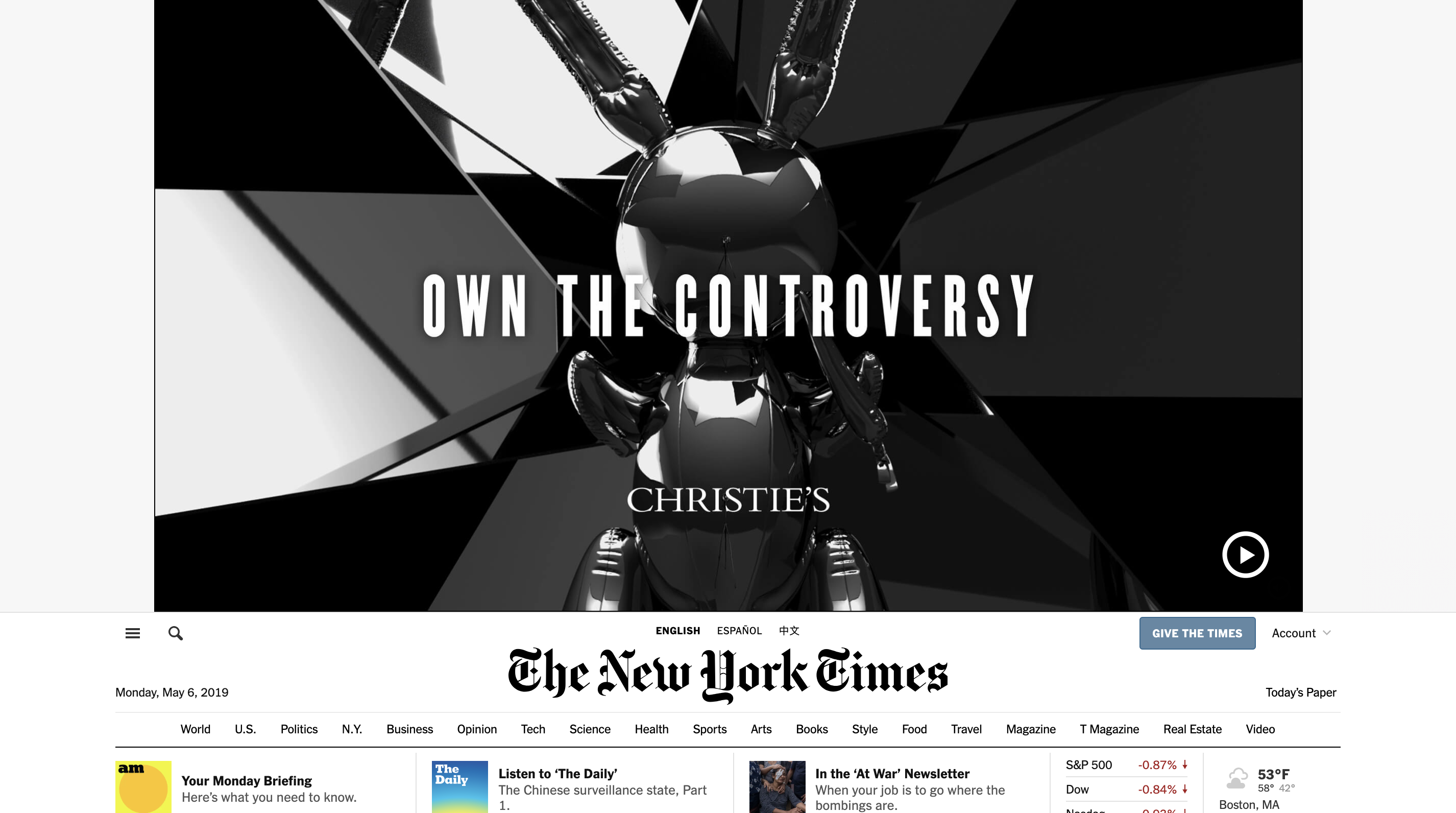
While a form of pay-per-click (PPC) advertising, display ads aren’t quite the same as paid search ads. While the latter appears on search engine results pages, display advertising is all about planting the messages on the individual websites themselves.
Note that display advertising is also different from native ads, which are meant to blend in with the user experience rather than disrupt it.
I know what you’re thinking: Don’t people hate advertising that pushes its way onto their radar? You’re not wrong. However, when done well, display ads can actually reap more rewards than you may think. Take for example display ads that retarget consumers, which are 70% more likely to result in conversions than the average digital ad. (Not gonna lie, I did recently purchase another pair of Docs and – as much as I hate to admit it – those retargeted display ads helped keep them on my radar while I weighed my options.)
As with any effective advertising, marketers use display campaigns to target specific audiences to increase ad relevance, clicks and conversions. The ads can take on many sizes and formats, with the message targeting viewers anywhere from the awareness stage to the final moments of decision-making.
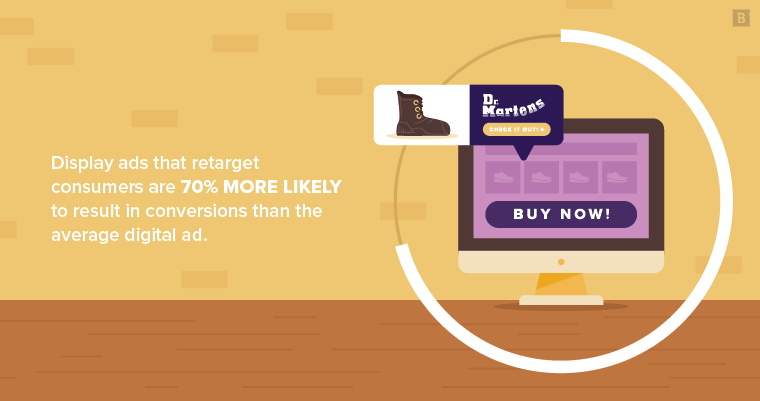
Important note: Most advertisers choose to run their ads through the Google Display Network because it’s the largest in the world, reaching 90% of Internet users across millions of websites. What’s more, you get access to the search giant’s targeting data and techniques, which makes the whole process way easier (and generally more successful) for your team.
Meet the various types of display advertising
The first distinguishing characteristic of display ad formats is their sizes. The dimensions vary depending on where on the screen they end up, as well as the device advertisers intend for them to be viewed on. While the Google Display Network supports various ad dimensions, the search giant identified 300 x 250 pixels, or a medium rectangle, as the top-performing size.
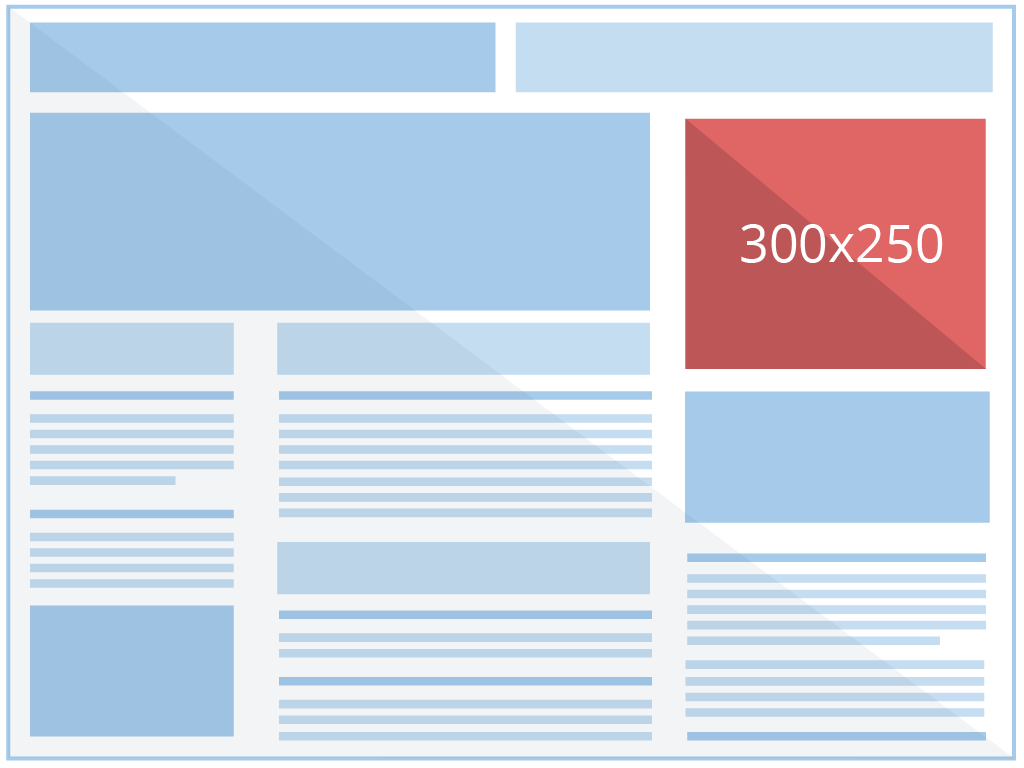
Side note: Responsive display ads are the default ad type in the Display Network. You’ll love these because they automatically adjust the size, appearance and ad formats to fit virtually any space.
Along with ad size, you have some decisions to make regarding what goes inside the designated advertisement space. Common types of display ads we’ve seen in the wild include:
Text ads: Keep it simple with digital ads that have a clickable headline with a few lines of copy.

Graphical ads: Add some static images, illustrations or other graphics to the mix and you have a more eye-catching display ad.

Rich media ads: Kick the visuals up a notch with videos, GIFs, animations and other moving parts that catch user attention.

Beyond sizes and designs, you can differentiate display ads by their targeting techniques. Some of the main types of display campaigns include:
- Remarketing display ads: Remember how Dr. Martens retargeted me? That’s called a remarketing campaign, designed to target users who previously visited your site by using cookies to track their activity. The remarketing ad appears when they’re browsing on another website in an attempt to get users back to your website.
- Contextual advertising: This type of targeting employs keyword research to determine relevant destinations for the display ads. For instance, a company might advertise their suitcases and duffle bags on brand sites like Kayak, JetBlue or Travel & Leisure.
- Interest targeting: Use Google AdWords data to target in-market audiences who are actively searching for a product or service similar to yours, as well as affinity audiences with long-term interests that align with your product or service even if the users aren’t currently in research mode.
- Site-placement targeting: Rather than letting Google choose the sites, you can make the ad placement selections yourself.
Needless to say, display advertising is a relatively broad term that embodies several types of digital ads on websites. Finding the best ad formats for your brand will take some experimenting, but your campaign goals and target audience will serve as strong guides to get you started.
Get ready to build your display ad campaign
As all relevant digital marketing goes, display campaigns require a decent amount of strategic thinking to yield an ideal return on investment. Before diving into the deep end, make sure you take these important steps to construct a successful display ad strategy:
Set your campaign goals
You won’t be able to track performance without knowing what you want your display campaign to achieve. That’s why before you even think about ad placement or design, you’ll need to define your campaign goals. Start by asking yourself what you want the display ads to achieve. The answer will probably be to increase something, whether it be brand awareness, web traffic, sales, conversion rates and so on.
When your boss asks for the numbers to back up your spending on online advertising, don’t forget that the click-through rate (CTR) won’t tell the whole story. Success metrics will vary depending on what stage of the customer journey your ads dabble in. For instance, top-of-the-funnel KPIs deal with brand awareness and how potential customers feel about your messaging. This may include the number of new site visitors as well as engagement indicators such as visit duration or number of web pages viewed. Middle-of-the-funnel starts getting into conversion metrics, while bottom-of-the-funnel is better analyzed through ROI and lifetime value KPIs.
Side note: Services like Google Display Network will generate analytics reports and offer tracking tools that will help you measure how well your display campaign is working. You can also request the information from the publishing website or track site traffic sources to see if you’re meeting your campaign goals.
Nail down your targeted approach
As any advertiser knows, the audience rules the strategy. Segment your audience by location, demographics and other parameters that will inform more relevant display ads. Keyword research can also help you match your ad copy to the terms and phrases your audience is likely to search.
From there, you can determine what kind of display campaign you want to run, such as the ever-effective remarketing tactics we discussed earlier. However, keep in mind that Google’s targeting efforts are more concerned with impressions than your conversion rates. As such, you might have to do a little extra work in determining your own placements, refining your keywords and digging into Google Analytics to improve your campaign targeting.
Determine your execution plan
Next up is determining how you plan to go about ad placement. As noted above, most advertisers choose to go with the Google Display Network, which is the display ads division of the Google Ads paid advertising platform. This gives you access to Google’s network of websites across industries, within which you’re bound to find relevant placements for your display ads. The Facebook Audience Network is another option, which is an in-app advertising network for mobile apps.
You may also choose to approach a website or publisher directly, which can be effective for small local businesses that want to target an intimate network of sites. However, large-scale digital marketing campaigns generally benefit from the wide-ranging reach of programmatic platforms and affiliate networks.
Create winning display ads
These might be tiny graphics, but a lot goes into display ad creation. Remember that you’re fighting to catch your audience’s attention without annoying viewers with the disruption, as well as competing to stand out in the overcrowded digital space.
Before you panic, consider these best practices that can help you create victorious display ads:
Include the essentials
The most successful display ads have a few elements in common: brand logo or name, value proposition and a call-to-action button. In a matter of seconds, viewers should understand who’s talking to them, what the ads are saying to them and why they should take the next steps.
Follow the standards
You’re free to be as creative as possible, as long as you stay within the limits of the recommended or required ad dimensions. You’ll also want to familiarize yourself with the Interactive Advertising Bureau guidelines for display, video and native ads.
Be clear yet compelling
Don’t forget that you’re working with quite a tiny space on the screen. Keeping the design simple and copy brief will generally serve you better than overloading the ad with too many elements.
In general, use high-resolution elements and minimal color palettes for your display ads, maxing out at two to three hues. Contrasting colors are especially helpful for simplicity and readability.
As far the copy goes, make every word count. Just because you’re working with a limited character count doesn’t mean you can’t communicate a compelling message. Keeping that message clear also means focusing on a singular marketing goal or CTA, such as signing up for an event, activating a discount code or browsing new offerings. For each display advertising campaign you run, use A/B testing to optimize your copy; for instance, to determine which CTA generates the most conversions.
Take these simple, straight-to-the-point Squarespace ads for example:
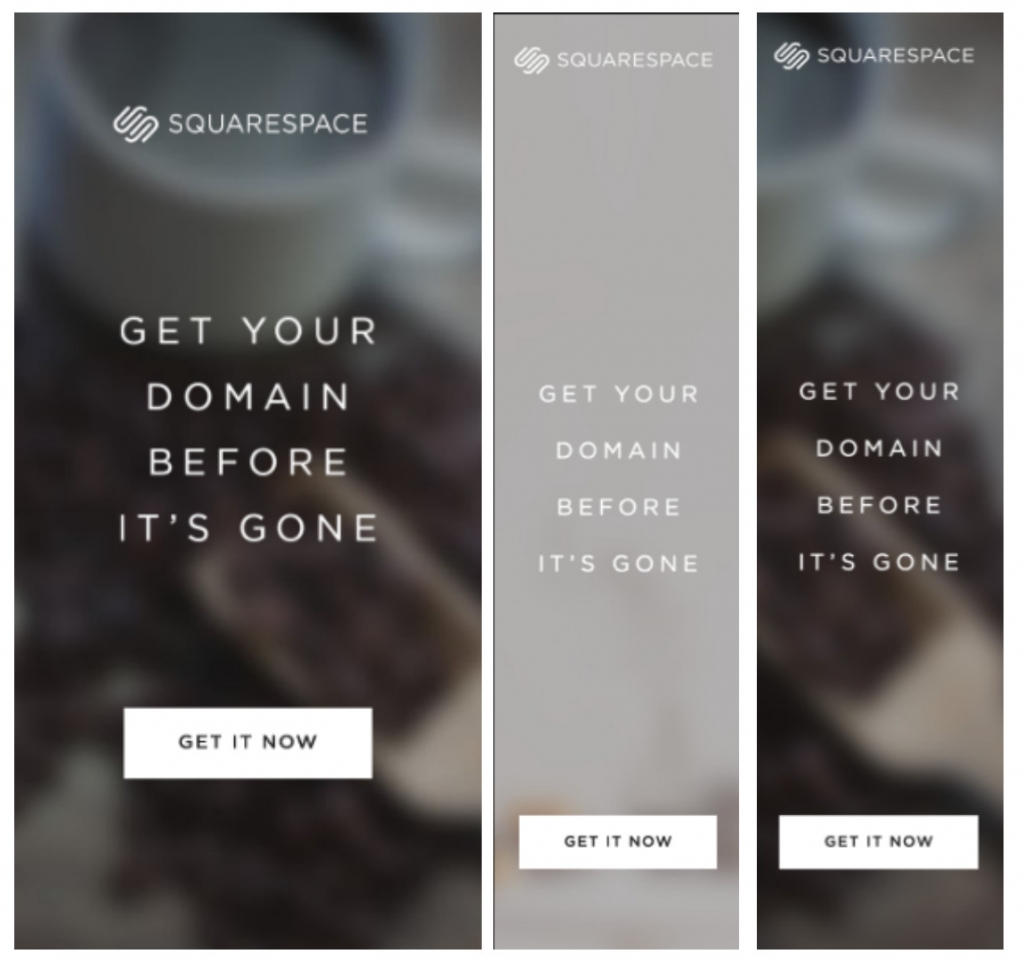
Use lots of visual assets
Let’s face it: Plain text ads aren’t nearly as eye-catching as display ads with visuals. We’re talking high-quality imagery and illustrations, legible fonts and crisp brand elements. Of course, video ads and rich media like GIFs and animations can make a digital ad even more visually appealing. The moving elements are especially effective at drawing the eye to the advertisement.
Don’t make promises you can’t keep
Your ad should catch user attention, but it shouldn’t do so by stretching the truth. Avoid any misleading copy or imagery, ensuring that users know exactly what they’re getting into when they click on the ad.
Curate the destination
Along with keeping your promise once users click, be strategic about where they end up. Your money is more likely to go to waste if you direct users to a generic landing page. Instead, increase the performance of your ads by creating custom landing pages. They should feature content that’s tailored to the display campaign or advertising message to keep users engaged and encourage them to take action.
Stand out – but stay on brand
Remember to be consistent throughout your display campaign, giving each ad a similar look and feel. What’s more, that consistent design and tone should align with your brand image and style guidelines. That way, users will automatically associate the ads with your brand. Plus, people are more likely to trust ads that feature consistent and reliable branding. These Nike display ads are a good example of brand consistency:
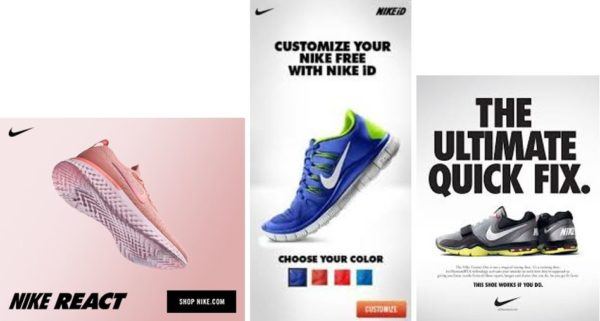
Consider the platform
Yes, display ads are there to disrupt the user from what they’re doing, ideally grabbing their attention long enough to get them to click. However, it’s still a good idea to make sure the ad is relevant to the platform. Take a cue from native advertising when possible, especially for paid social media ads. You don’t want to throw users off as they scroll, which is why you’ll benefit from mirroring the content typically shared on the platform in your design and copy.
If you’re lacking design resources, no need to fear. Digital marketing tools like Bannersnack and the Display Ad Builder tool within Google Ads offer templates you can use to create banner ads of various shapes and sizes. These tools will also ensure that your ads display properly on different types of mobile devices.
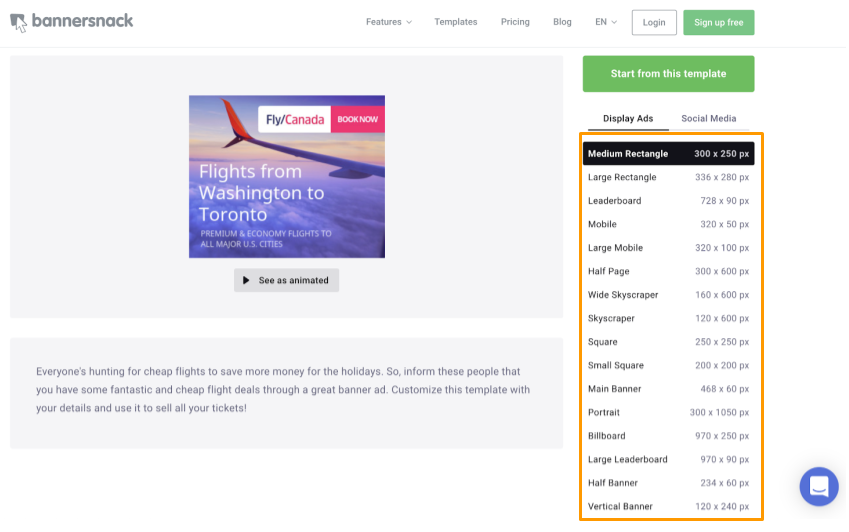
One last dose of inspiration
Now that you’re up to par on display advertising, we’ll leave you with some examples of brands who got it right.
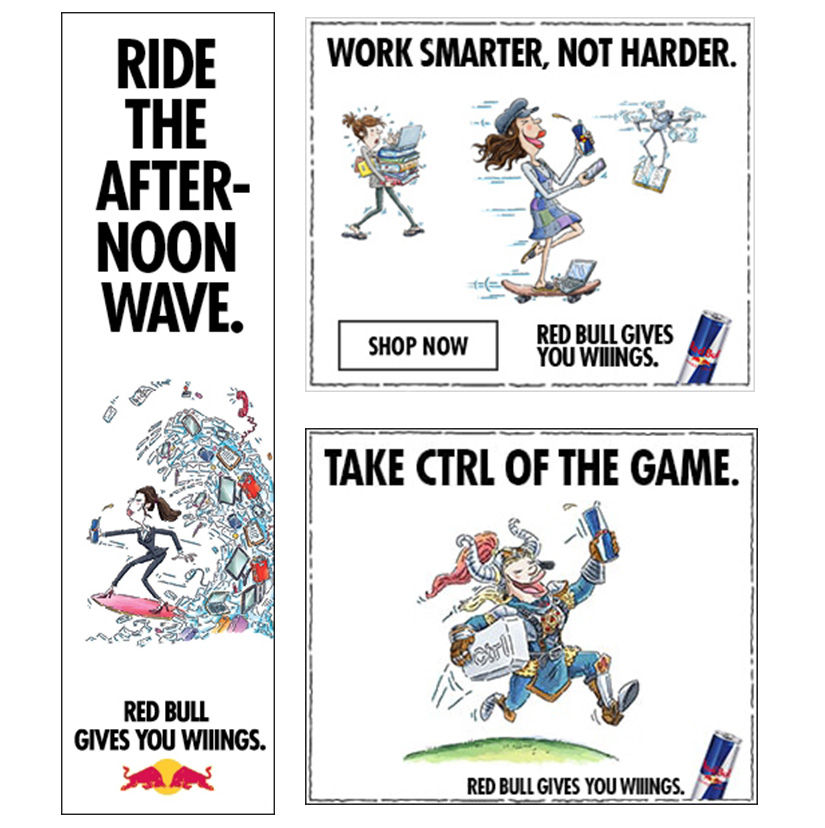

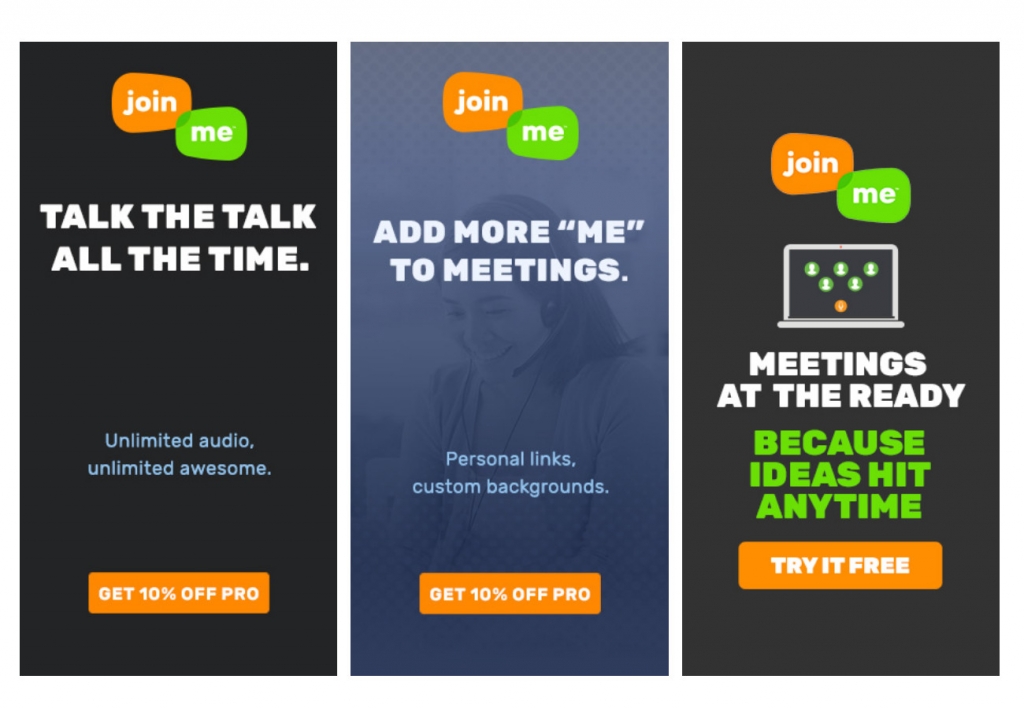

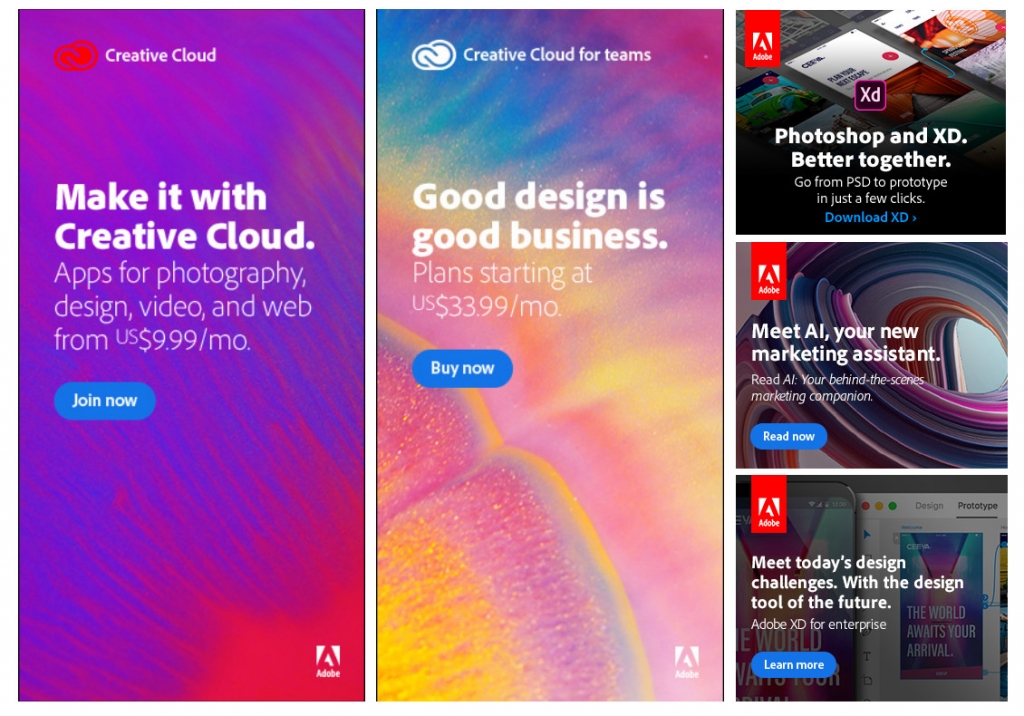

Ready, set, go! It’s your turn to convert your audience with eye-catching display ads. Will it be a remarketing campaign? Video ads? Both? You’re in charge – and now you have the info you need to implement display campaigns that win over viewers. Good luck!
Editor’s note: Updated October 2020.





